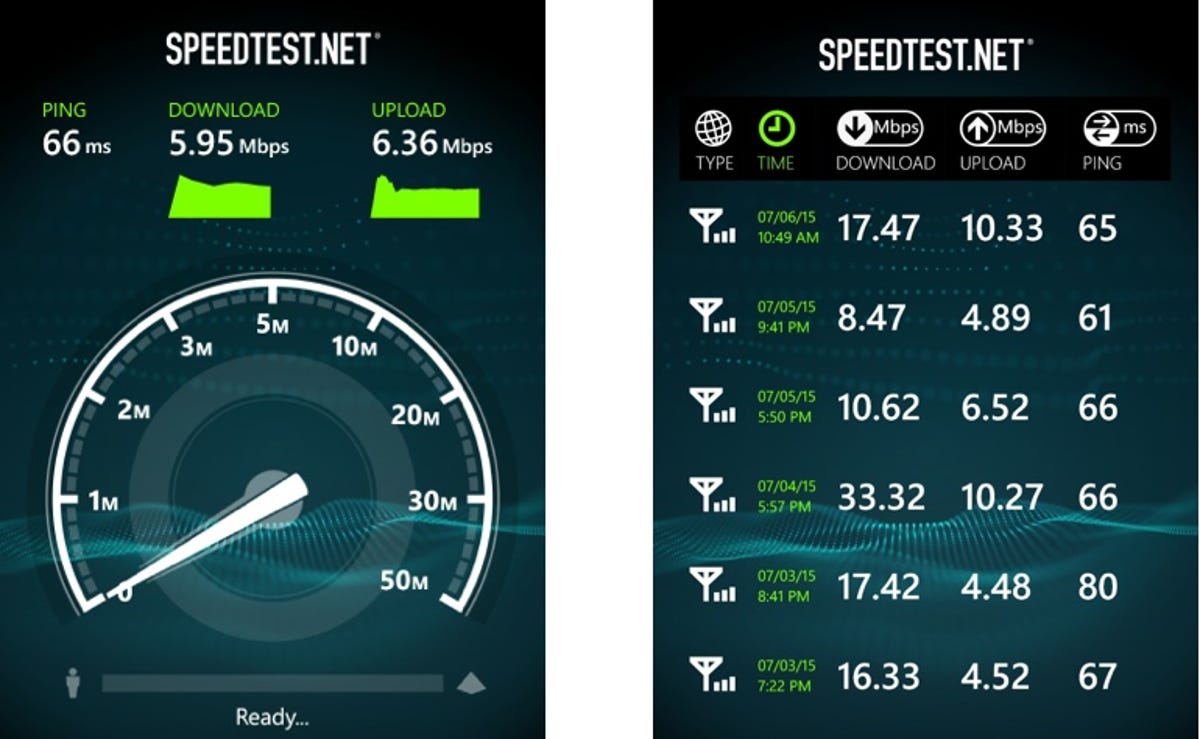
Jessica Dolcourt/CNET
The US is rapidly falling behind the majority of other countries when it comes to high-speed wireless technology LTE, commonly known as 4G, coming in 14th slowest of 140 countries worldwide.
In contrast, the best performing nation for LTE — taking into account a combination of speed and coverage — is South Korea, according to data collected from 325,221 users of OpenSignal, an app that maps cellular coverage.
LTE speeds of 20 megabits per second are now common in many countries, according to OpenSignal’s report, conducted using data from June and August and published today. With 140 countries globally now deploying the network technology, eight with LTE scheduled and virtually every nation with an upgrade plan in place, the world is growing closer to widespread adoption of LTE. Wireless speeds are improving even in regions that have traditionally been slower to adopt new technologies.
Subscribers to phone networks in South Korea are connected to LTE 97 percent of the time and all enjoy download speeds over 25Mbps, according to OpenSignal. The country’s star network is KT’s Olleh, which provided almost ubiquitous coverage and extremely high speeds.
Related stories
- How 5G will push a supercharged network to your phone, home, car
- Forget 4G. Here’s what 5G wireless tech will look like
- Dead fast, la: Britain’s fastest 4G is in Liverpool
South Korea is well known for its fast networks, but in fact the world’s very speediest network is Singapore’s StarHub, which can can offer data at a rip-roaring 38Mbps. South Korea is not even the fastest overall country — that crown goes to New Zealand, which only launched LTE two years ago.
A trend has emerged where nations getting on board with LTE later offer speedier data than those with more established networks. Countries such as the US, Japan, Germany and Sweden that were among the first to adopt LTE are starting to fall behind when it comes to data performance. Last year OpenSignal suggested that in the US recorded download speeds were actually falling.
Carriers in more mature markets tend to see more subscribers jumping on to LTE networks, increasing congestion and potentially slowing down traffic. The US carriers have noted that it’s more difficult to build a nationwide network that covers a large country like America versus a smaller nation such as South Korea or New Zealand.
Eastern European operators are making up for lost time with “awe-inspiring data rates,” according to OpenSignal. Romania, in particular, has become one of the fastest countries in the world, with average speeds of 30Mbps.
Data performance in many countries are improving thanks to network upgrades, with operators deploying LTE in new frequency bands as they become available and adding more capacity to their networks. South Korea has nearly doubled its LTE speeds in the last couple of years and significant investments in networks are also having an impact in Singapore, Denmark, Austria and Hungary.
Poorly performing networks tend in general to be in developing nations, but with exceptions. Three, one of the UK’s major networks, was among the most disappointing performers. The UK is distinctly middling when it comes to download speeds, with an average of 13Mbps, and performed poorly in terms of coverage. Australia averages 21Mbps, the 10th fastest average in the world.



